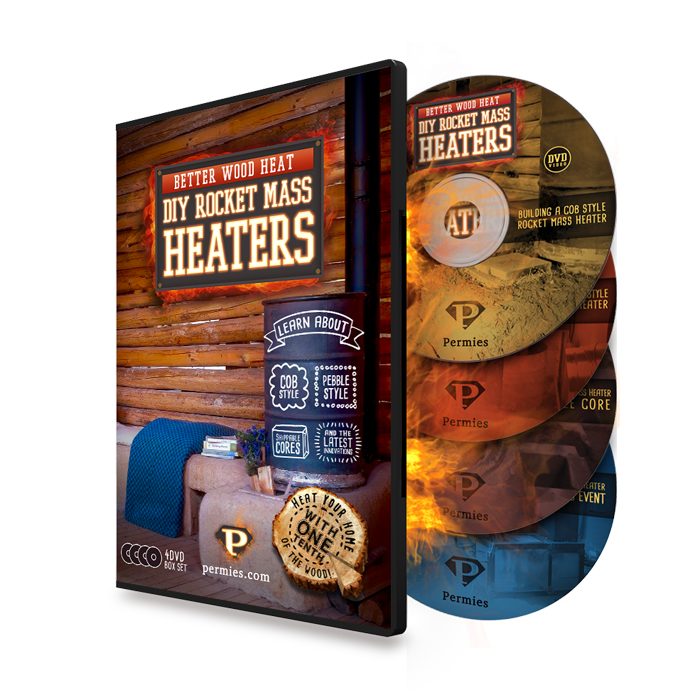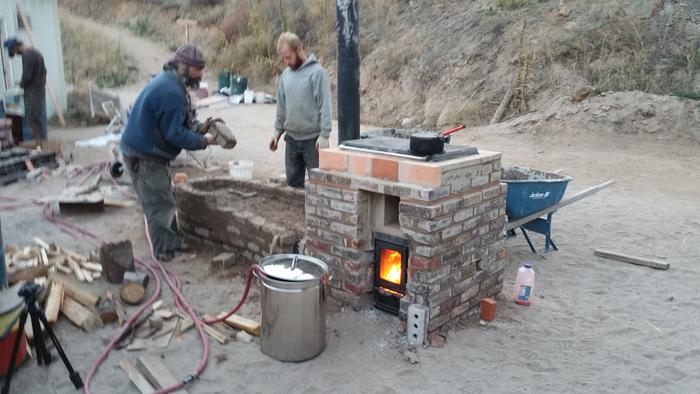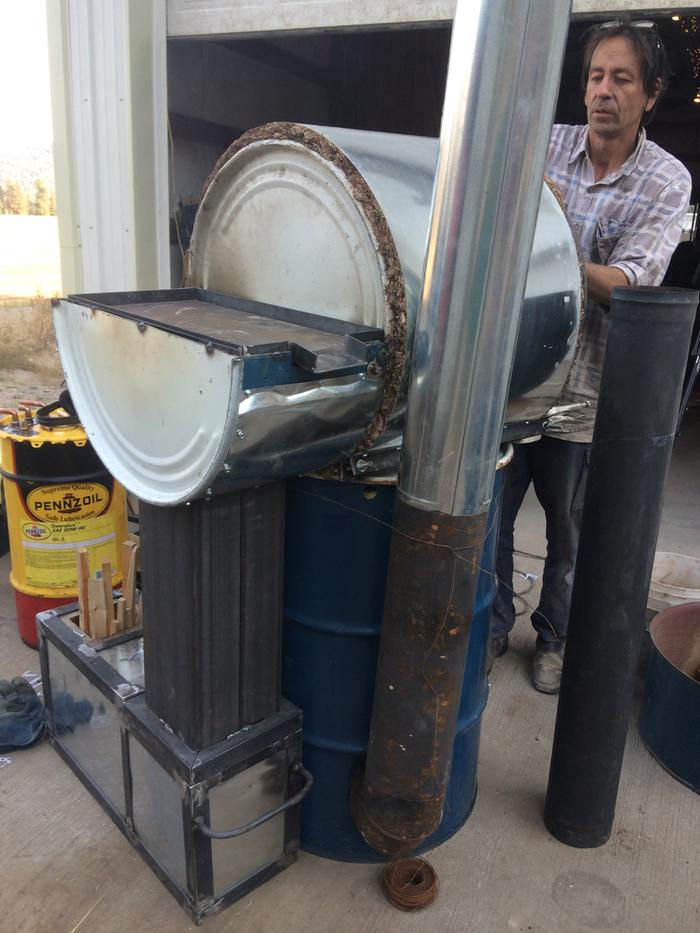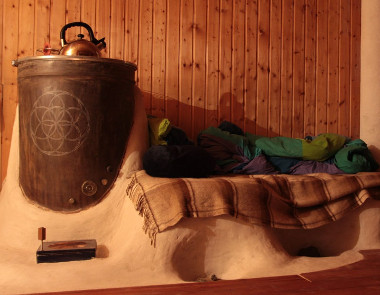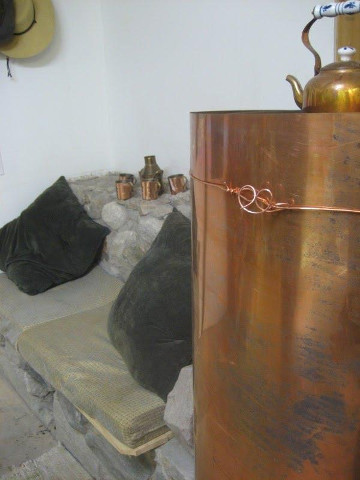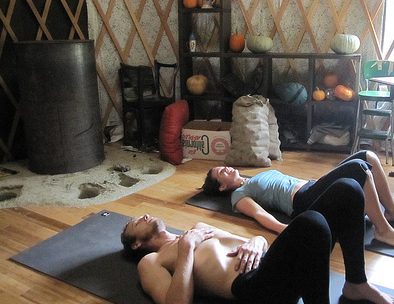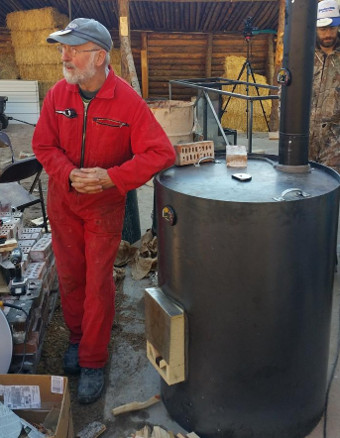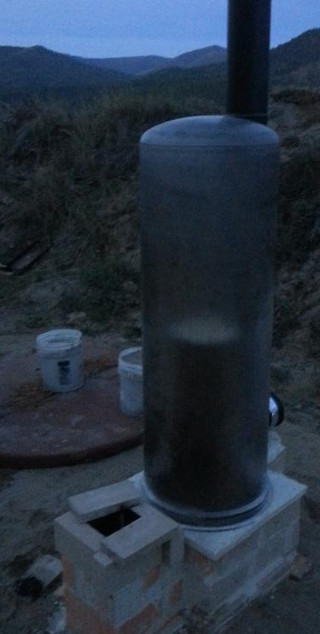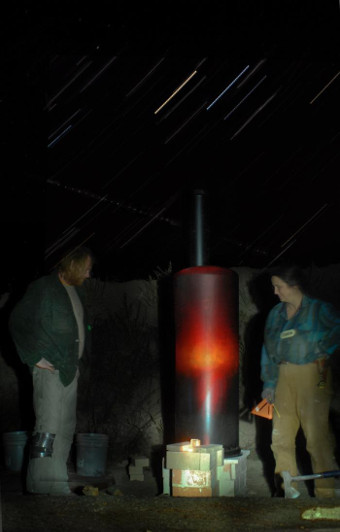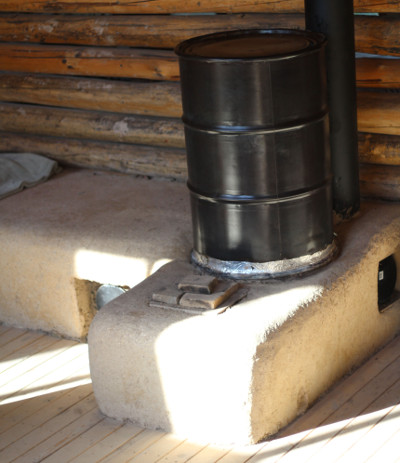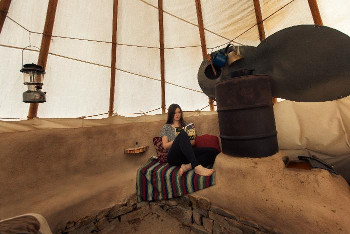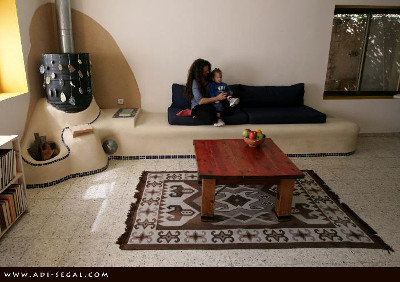There are two excellent books.
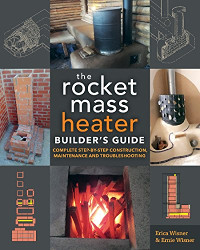
This comprehensive book about rocket mass heaters just came out! This should put an end to the freak shows of flaming death showing up on YouTube
mislabeled as rocket mass heaters - and put an end to getting the same questions asked over and over again. We can start every answer with, "Have you read The Rocket Mass Heater Builder's Guide?"
This book is written by Erica Wisner and Ernie Wisner. The stars of all eight DVDs. Naturally, a lot of the information covered in this book matches very well to the content in the DVD.
In fact, the primary example in the book is the cob style rocket mass heater built in the log structure in DVD1.
Oodles of details about the rocket mass heater builder's guide.
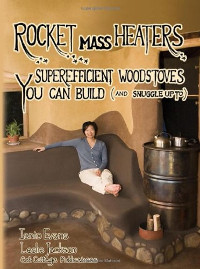
Erica and Ernie contributed heavily to this book which is now about ten years old. They even contributed to the third edition which came out a few years ago. This book is written by
Ianto Evans, the inventor of the rocket mass heater and illustrated by Leslie Jackson. It is a delicious exploration of how a rocket mass heater works. While thousands of people have built
rocket mass heaters using nothing but this book, things have come a long ways in the last ten years. This book is comfortable, enjoyable and of great value, but not so much a "how to" as much of
helping you to understand "how come".
More ...

For many years before Erica started to write the builder's guide, she was cranking out detailed plans for rocket mass heaters that she and ernie had designed and built during a workshop.
She would never relase plans until the installation was at least a year old and had proved to be a success. As the years passed, she amassed a LOT of plans, wrote several ebooks and even started
share the earliest dabblings of her new book. Demand was high. Eventually she offered it all as one big gob of files.
